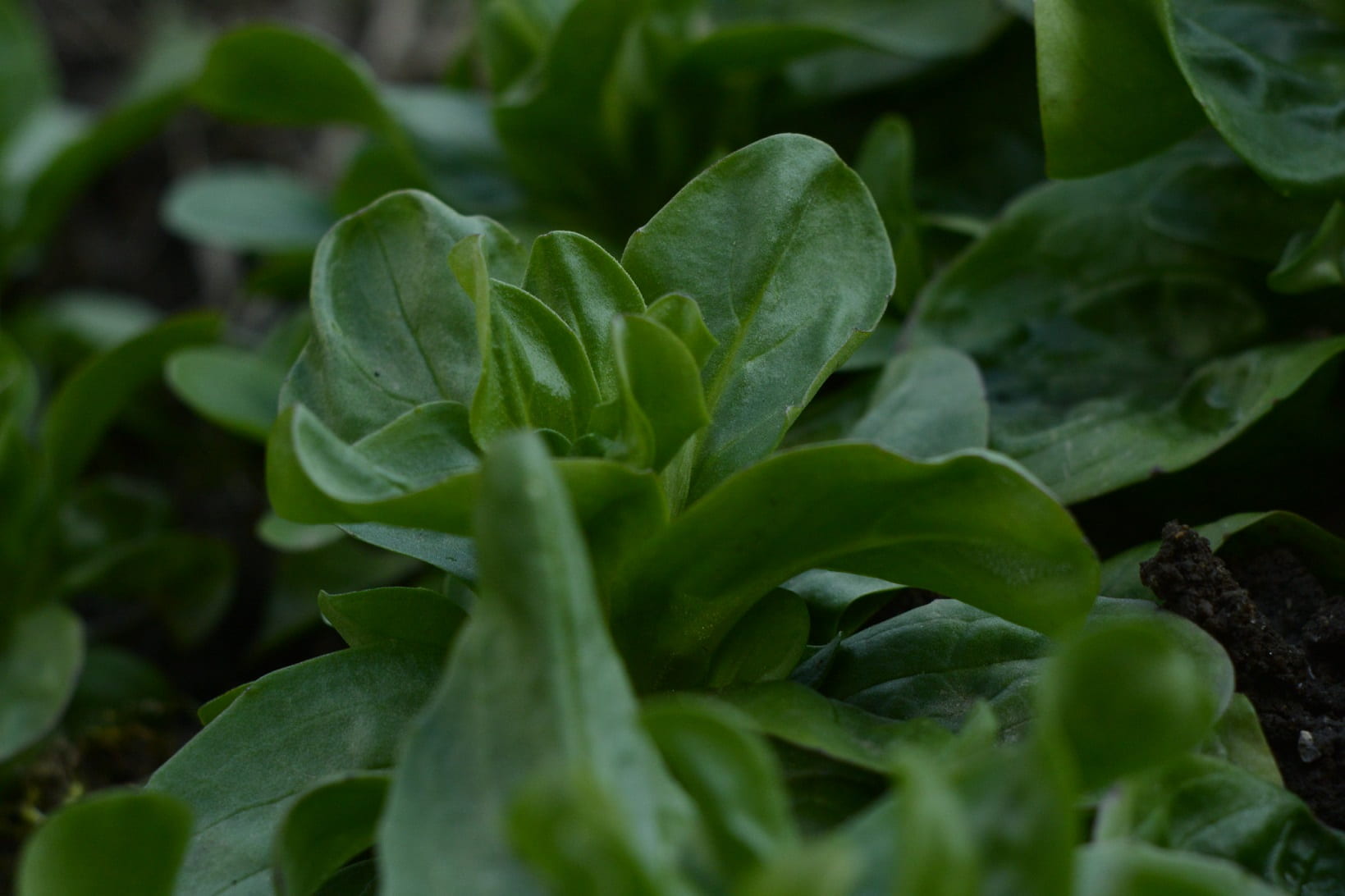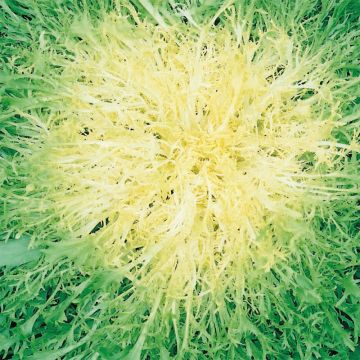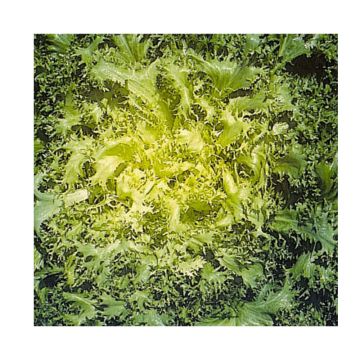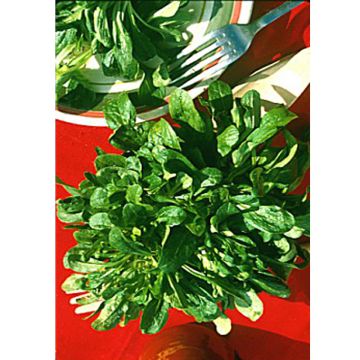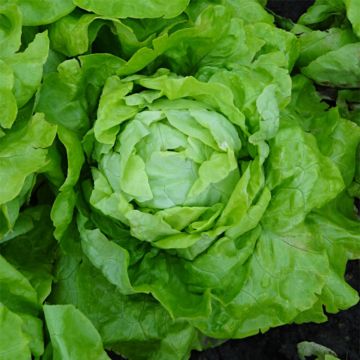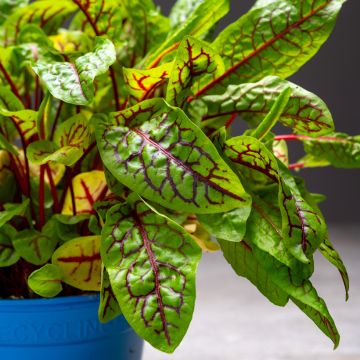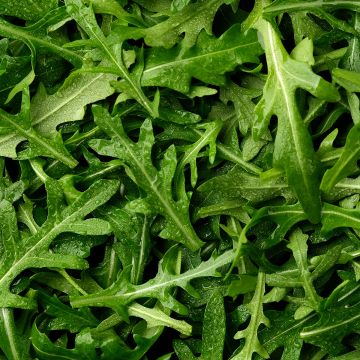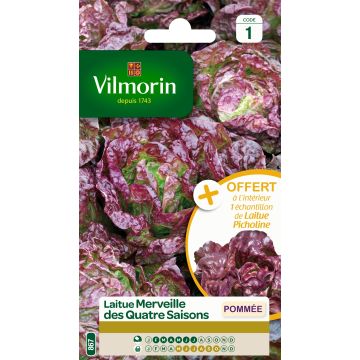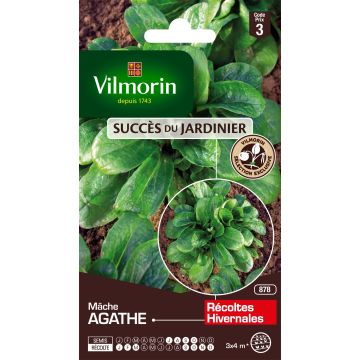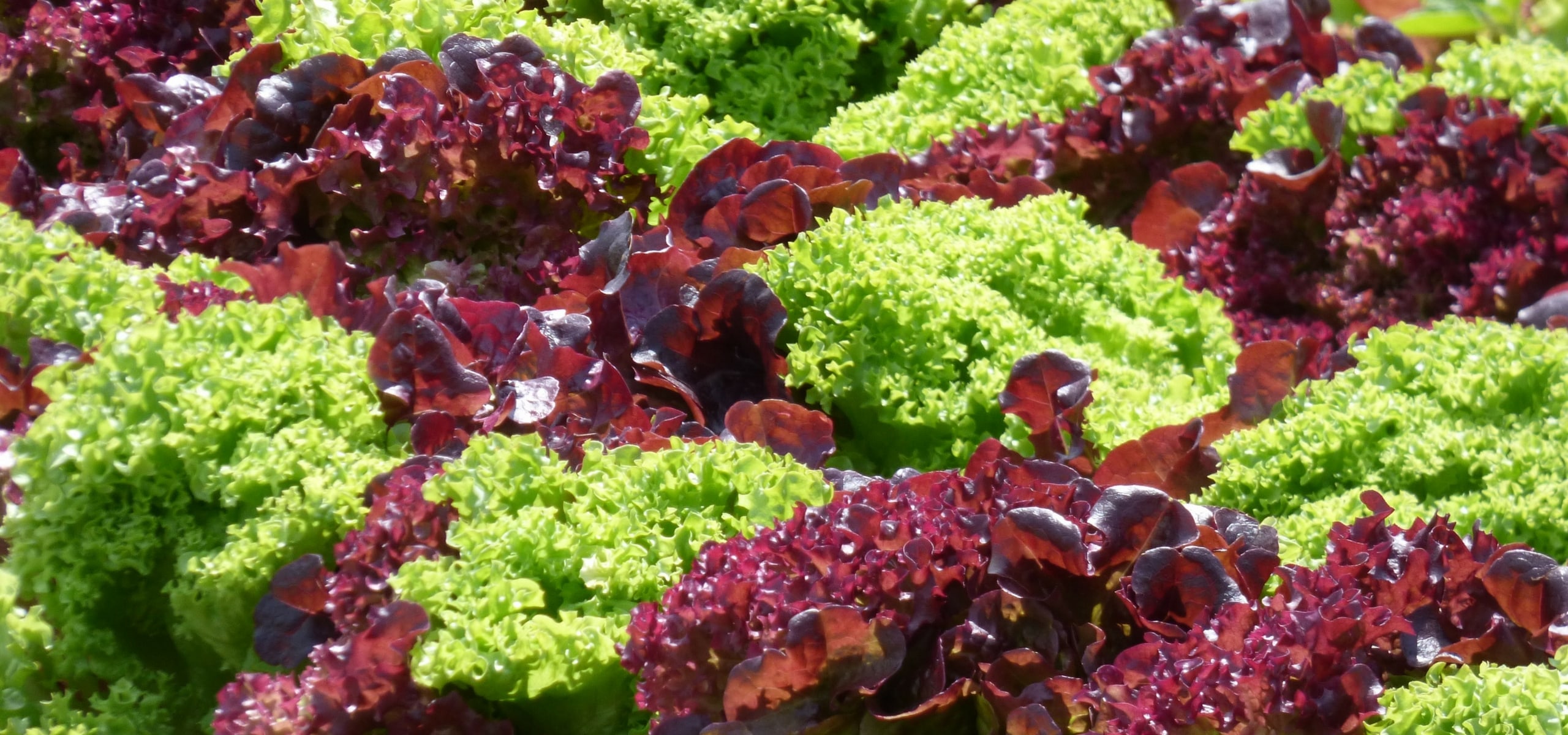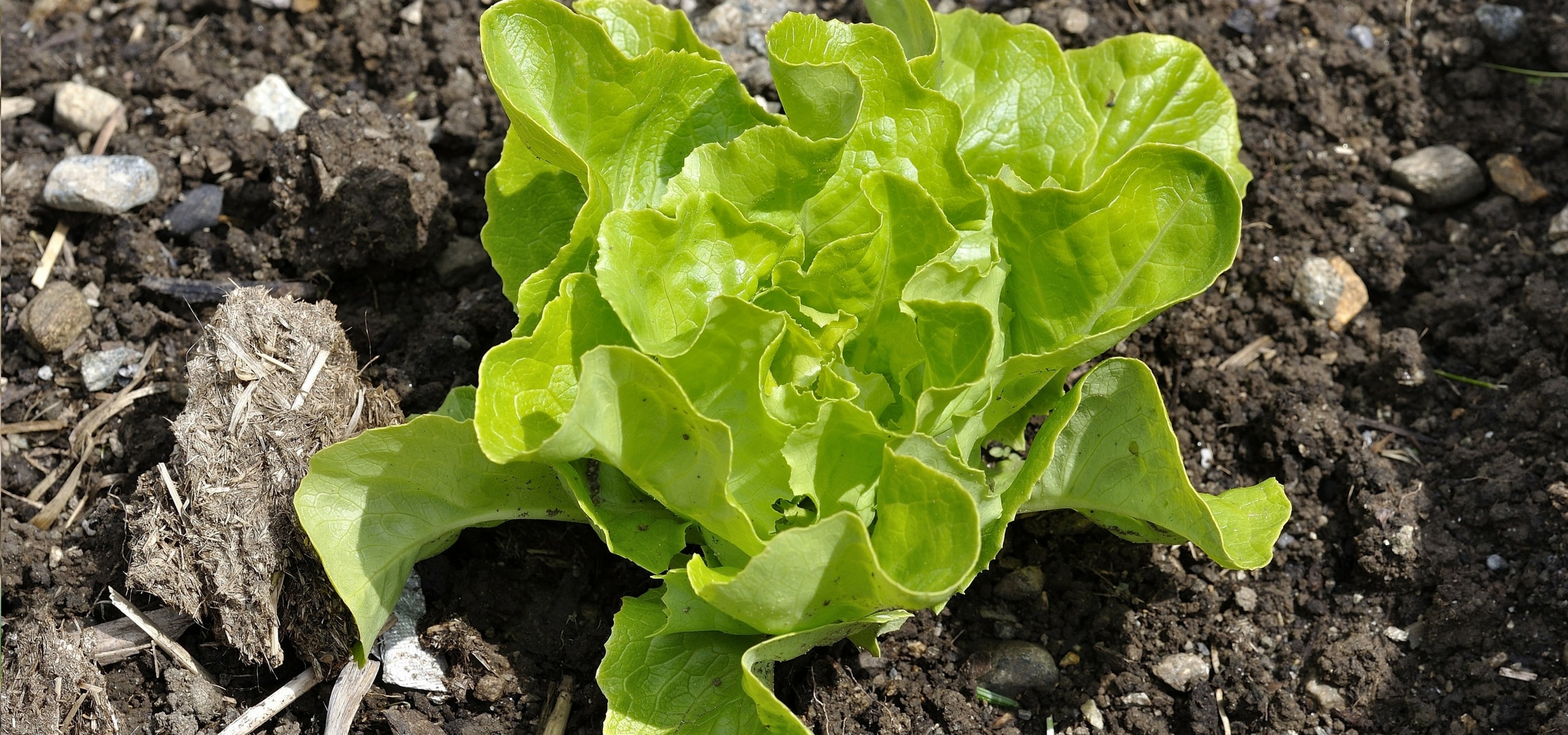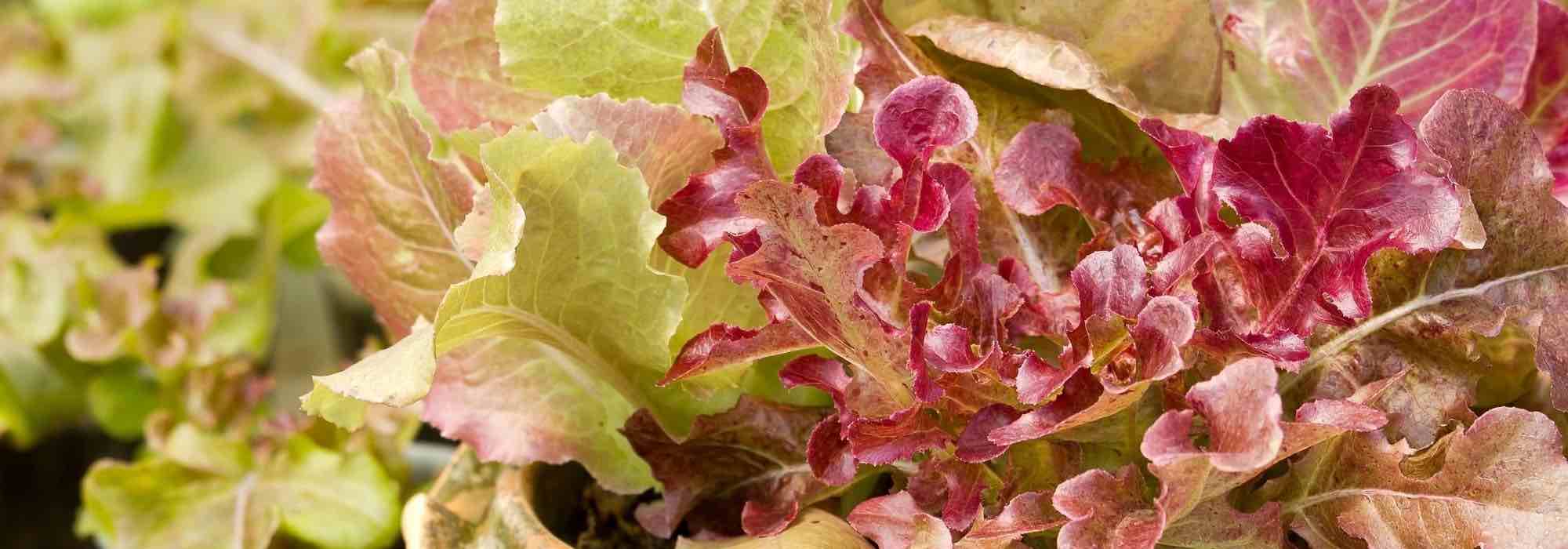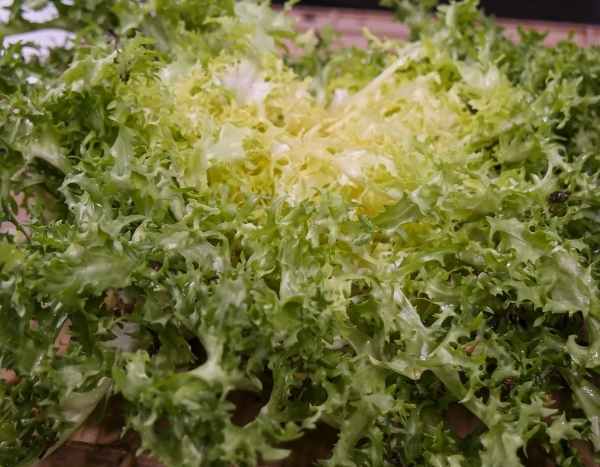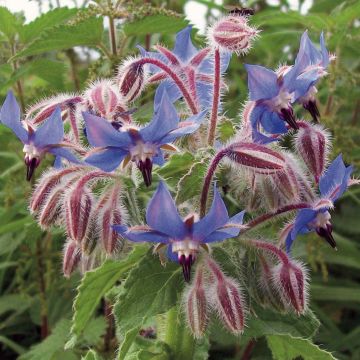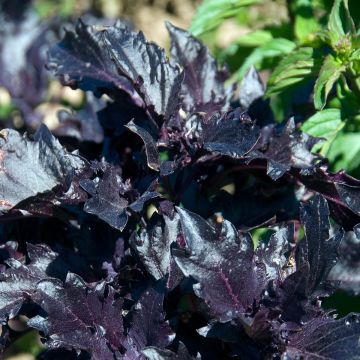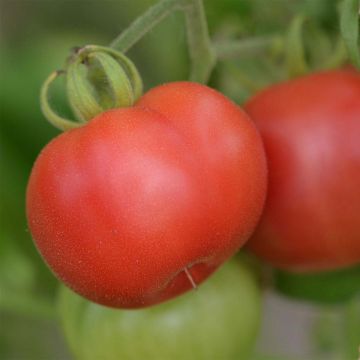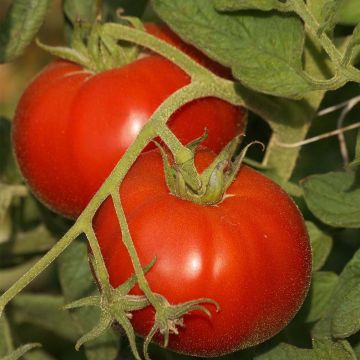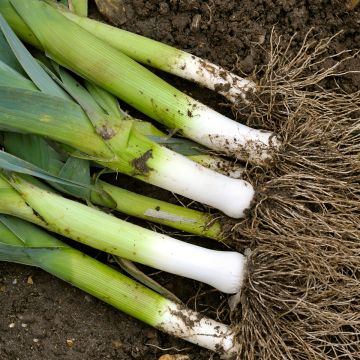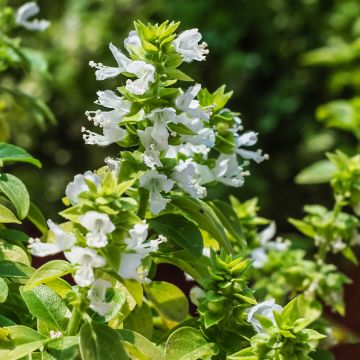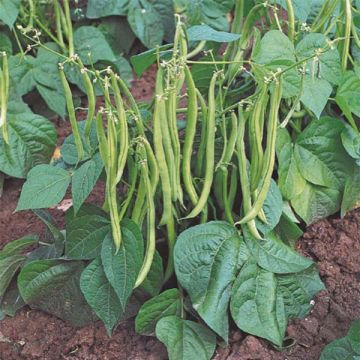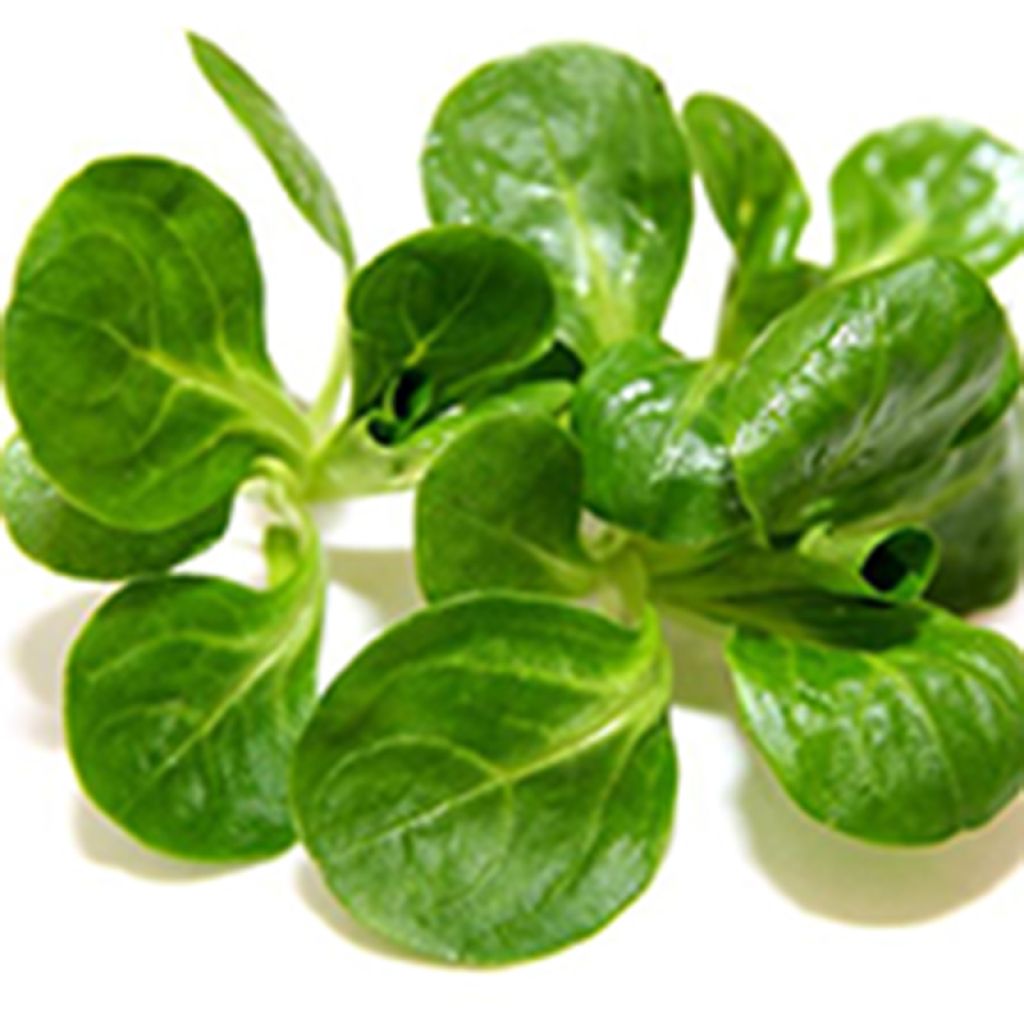

Lambs Lettuce Elan - Ferme de Sainte Marthe Seeds
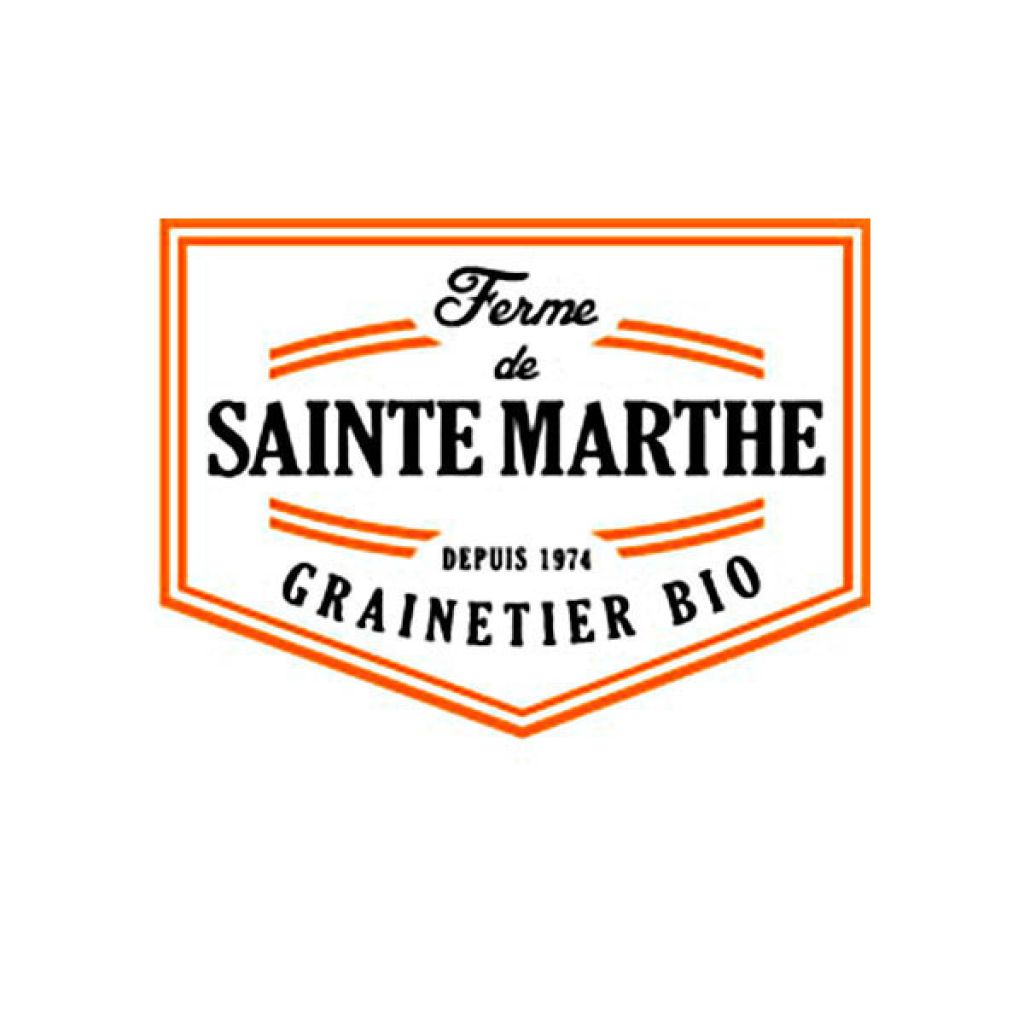

Lambs Lettuce Elan - Ferme de Sainte Marthe Seeds
Lambs Lettuce Elan - Ferme de Sainte Marthe Seeds
Valerianella locusta Elan
Corn salad, Lamb's Lettuce
Very long shoot, never got to taste them... I collected numerous seeds after the flowering in spring :(
Kath, 24/05/2019
Special offer!
Receive a €20 voucher for any order over €90 (excluding delivery costs, credit notes, and plastic-free options)!
1- Add your favorite plants to your cart.
2- Once you have reached €90, confirm your order (you can even choose the delivery date!).
3- As soon as your order is shipped, you will receive an email containing your voucher code, valid for 3 months (90 days).
Your voucher is unique and can only be used once, for any order with a minimum value of €20, excluding delivery costs.
Can be combined with other current offers, non-divisible and non-refundable.
Home or relay delivery (depending on size and destination)
Schedule delivery date,
and select date in basket
This plant carries a 6 months recovery warranty
More information
We guarantee the quality of our plants for a full growing cycle, and will replace at our expense any plant that fails to recover under normal climatic and planting conditions.
Description
'Elan' Lamb's lettuce is a very productive, fast-growing variety that produces rosettes of large, tasty spoon-shaped, dark green leaves. Resistant to downy mildew. Sow from July to October and harvest from October to December.
Lamb's lettuce, also known as Corn salad or Mâche, is a small lettuce type vegetable belonging to the Caprifoliaceae family (like Honeysuckle). It forms rosettes of rounded leaves and can be found growing wild throughout Europe (where it is sometimes thought of as a weed!). Although some varieties can be sown and harvested all year-round, lamb's lettuce is generally harvested during the autumn and winter months when other salad greens are scarce. Large-seeded varieties have bigger leaves but are less cold-resistant than the smaller-seeded varieties. Lamb's lettuce has a tender texture and a mild, slightly nutty flavour. It is delicious eaten raw in winter salads and can also be cooked like spinach. It is low in calories and very healthy thanks to its high vitamin E, beta-carotene and vitamin C content (three times more than lettuce).
Lamb's lettuce is easy to grow. Make sure to firm down the soil after sowing and to maintain constant soil moisture.
Harvesting: harvest as and when required by cutting the rosettes of leaves off at their base.
Storage: lamb's lettuce will keep for a few days in the refrigerator.
Good to know: Lamb's lettuce self-seeds easily. Leave a few rosettes to go to seed in the spring for effortless crops year after year!
NB. Organic seeds (in French "AB" for "Agriculture Biologique") are produced from plants that aren't treated with phytosanitary products (insecticides, weed killers). The seeds do not undergo post-harvest treatment. They carry the AB label and are approved by Ecocert, an independent structure.
Harvest
Plant habit
Foliage
Botanical data
Valerianella
locusta
Elan
Caprifoliaceae
Corn salad, Lamb's Lettuce
Cultivar or hybrid
Annual
Other Salad leaf seeds
View all →Planting and care
Sowing:
Lamb's lettuce germinates at a temperature of about 14°C and takes 10 days on average.
Sow from August-September for harvests from September to November.
Lamb's lettuce gives best results in firm, lightly raked, non-loosened soil. Sow the seeds every 0.5 to 1 cm, in furrows 15-20 cm apart and 1 cm deep. Cover lightly and firm down the soil with the back of the rake. Keep the soil moist until germination. Lamb's lettuce is best sown in the shade or half-shade. If this is not possible, cover your seedlings with a thin layer of mulch (such as grass clippings). This will help keep the soil moist until autumn.
Lamb's lettuce seeds can also be broadcasted over the prepared plot: count about 5 to 7 grams of seeds per 10 m2 (12 grams for large-seeded varieties).
Growing:
Lamb's lettuce is not a heavy feeder, there is no need to amend the plot beforehand. Winter varieties are hardy to a certain extent... During severe frosts, it is best to cover them with garden fleece or a layer of straw just in case.
Lamb's lettuce is suitable for growing in greenhouses or low tunnels. It is a good companion plant and can be sown alongside most vegetables.
Seedlings
Care
Intended location
Planting & care advice
-
, onOrder confirmed
Reply from on Promesse de fleurs
Similar products
Haven't found what you were looking for?
Hardiness is the lowest winter temperature a plant can endure without suffering serious damage or even dying. However, hardiness is affected by location (a sheltered area, such as a patio), protection (winter cover) and soil type (hardiness is improved by well-drained soil).

Photo Sharing Terms & Conditions
In order to encourage gardeners to interact and share their experiences, Promesse de fleurs offers various media enabling content to be uploaded onto its Site - in particular via the ‘Photo sharing’ module.
The User agrees to refrain from:
- Posting any content that is illegal, prejudicial, insulting, racist, inciteful to hatred, revisionist, contrary to public decency, that infringes on privacy or on the privacy rights of third parties, in particular the publicity rights of persons and goods, intellectual property rights, or the right to privacy.
- Submitting content on behalf of a third party;
- Impersonate the identity of a third party and/or publish any personal information about a third party;
In general, the User undertakes to refrain from any unethical behaviour.
All Content (in particular text, comments, files, images, photos, videos, creative works, etc.), which may be subject to property or intellectual property rights, image or other private rights, shall remain the property of the User, subject to the limited rights granted by the terms of the licence granted by Promesse de fleurs as stated below. Users are at liberty to publish or not to publish such Content on the Site, notably via the ‘Photo Sharing’ facility, and accept that this Content shall be made public and freely accessible, notably on the Internet.
Users further acknowledge, undertake to have ,and guarantee that they hold all necessary rights and permissions to publish such material on the Site, in particular with regard to the legislation in force pertaining to any privacy, property, intellectual property, image, or contractual rights, or rights of any other nature. By publishing such Content on the Site, Users acknowledge accepting full liability as publishers of the Content within the meaning of the law, and grant Promesse de fleurs, free of charge, an inclusive, worldwide licence for the said Content for the entire duration of its publication, including all reproduction, representation, up/downloading, displaying, performing, transmission, and storage rights.
Users also grant permission for their name to be linked to the Content and accept that this link may not always be made available.
By engaging in posting material, Users consent to their Content becoming automatically accessible on the Internet, in particular on other sites and/or blogs and/or web pages of the Promesse de fleurs site, including in particular social pages and the Promesse de fleurs catalogue.
Users may secure the removal of entrusted content free of charge by issuing a simple request via our contact form.
The flowering period indicated on our website applies to countries and regions located in USDA zone 8 (France, the United Kingdom, Ireland, the Netherlands, etc.)
It will vary according to where you live:
- In zones 9 to 10 (Italy, Spain, Greece, etc.), flowering will occur about 2 to 4 weeks earlier.
- In zones 6 to 7 (Germany, Poland, Slovenia, and lower mountainous regions), flowering will be delayed by 2 to 3 weeks.
- In zone 5 (Central Europe, Scandinavia), blooming will be delayed by 3 to 5 weeks.
In temperate climates, pruning of spring-flowering shrubs (forsythia, spireas, etc.) should be done just after flowering.
Pruning of summer-flowering shrubs (Indian Lilac, Perovskia, etc.) can be done in winter or spring.
In cold regions as well as with frost-sensitive plants, avoid pruning too early when severe frosts may still occur.
The planting period indicated on our website applies to countries and regions located in USDA zone 8 (France, United Kingdom, Ireland, Netherlands).
It will vary according to where you live:
- In Mediterranean zones (Marseille, Madrid, Milan, etc.), autumn and winter are the best planting periods.
- In continental zones (Strasbourg, Munich, Vienna, etc.), delay planting by 2 to 3 weeks in spring and bring it forward by 2 to 4 weeks in autumn.
- In mountainous regions (the Alps, Pyrenees, Carpathians, etc.), it is best to plant in late spring (May-June) or late summer (August-September).
The harvesting period indicated on our website applies to countries and regions in USDA zone 8 (France, England, Ireland, the Netherlands).
In colder areas (Scandinavia, Poland, Austria...) fruit and vegetable harvests are likely to be delayed by 3-4 weeks.
In warmer areas (Italy, Spain, Greece, etc.), harvesting will probably take place earlier, depending on weather conditions.
The sowing periods indicated on our website apply to countries and regions within USDA Zone 8 (France, UK, Ireland, Netherlands).
In colder areas (Scandinavia, Poland, Austria...), delay any outdoor sowing by 3-4 weeks, or sow under glass.
In warmer climes (Italy, Spain, Greece, etc.), bring outdoor sowing forward by a few weeks.






























